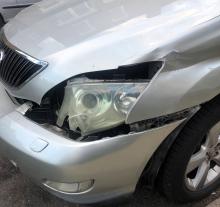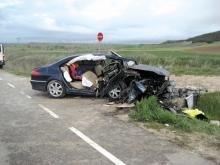In 2018, there were around 25,100 road accident fatalities within the 28 EU member countries.
This is a decrease of 21% compared to 2010. With an average of 49 road deaths per one million inhabitants, this confirms that European roads are by far the safest in the world, noted the Commission. But there is remains doubt that the EU target of halving the number of road deaths by 2020 can be reached, said the Commission.
For the majority of Member States, the road fatality rate was below 60 deaths per million inhabitants in 2018.
The EU countries with the best road safety results in 2018 were the United Kingdom (28 deaths/million inhabitants), Denmark (30/million), Ireland (31/million) and Sweden (32/million).
Countries with a higher-than-average decrease in road deaths from 2017 to 2018 were Slovenia (-13%), Lithuania (-11%), Bulgaria (-9%) and Slovakia and Cyprus (both -8%).
Only two EU countries recorded a fatality rate higher than 80 deaths per million inhabitants, against 7 in 2010. The countries with the highest fatality rate were Romania (96/million), Bulgaria (88/million), Latvia (78/million) and Croatia (77/million).
The Commission estimates that, for every road death, five more people were seriously injured on EU roads last year (around 135,000).
A large number of vulnerable road users were affected - pedestrians, cyclists, motorcyclists and the elderly, particularly in urban areas. The Commission said that demographic changes and the ongoing trend towards active and sustainable mobility means these groups are expected to represent a higher proportion of road users in the future.
"As we continue to work towards ‘Vision Zero' – zero road deaths by 2050, we are committed to working with all member states, as well as the Parliament and road safety community, to provide a level of safety that EU citizens demand and deserve," said Violeta Bulc, the EU’s commissioner for transport.
The European Parliament and the Council have said that risk mapping will be carried out for all motorways and for primary roads, and vulnerable road-users will have to be systematically taken into account in all safety assessments, audits and inspections. For vehicles, a number of safety features will be included in all new vehicles, such as so-called intelligent speed assistance to help drivers keep within the speed limit, and other proven new technologies such as automated emergency braking and lane-keeping assistance.
EU road fatalities dip 1% for 2018 but 2020 target slips away
The number of fatalities on European Union roads dipped by 1% last year, according to preliminary figures published today by the European Commission.
In 2018, there were around 25,100 road accident fatalities within the 28 EU member countries.
This is a decrease of 21% compared to 2010. With an average of 49 road deaths per one million inhabitants, this confirms that European roads are by far the safest in the world, noted the Commission. But there is remains doubt that the EU target of halving the nu
Road deaths per million inhabitants – preliminary country by country statistics for 2018
The number of fatalities on 1116 European Union roads dipped by 1% last year, according to preliminary figures published today by the 2465 European Commission.







